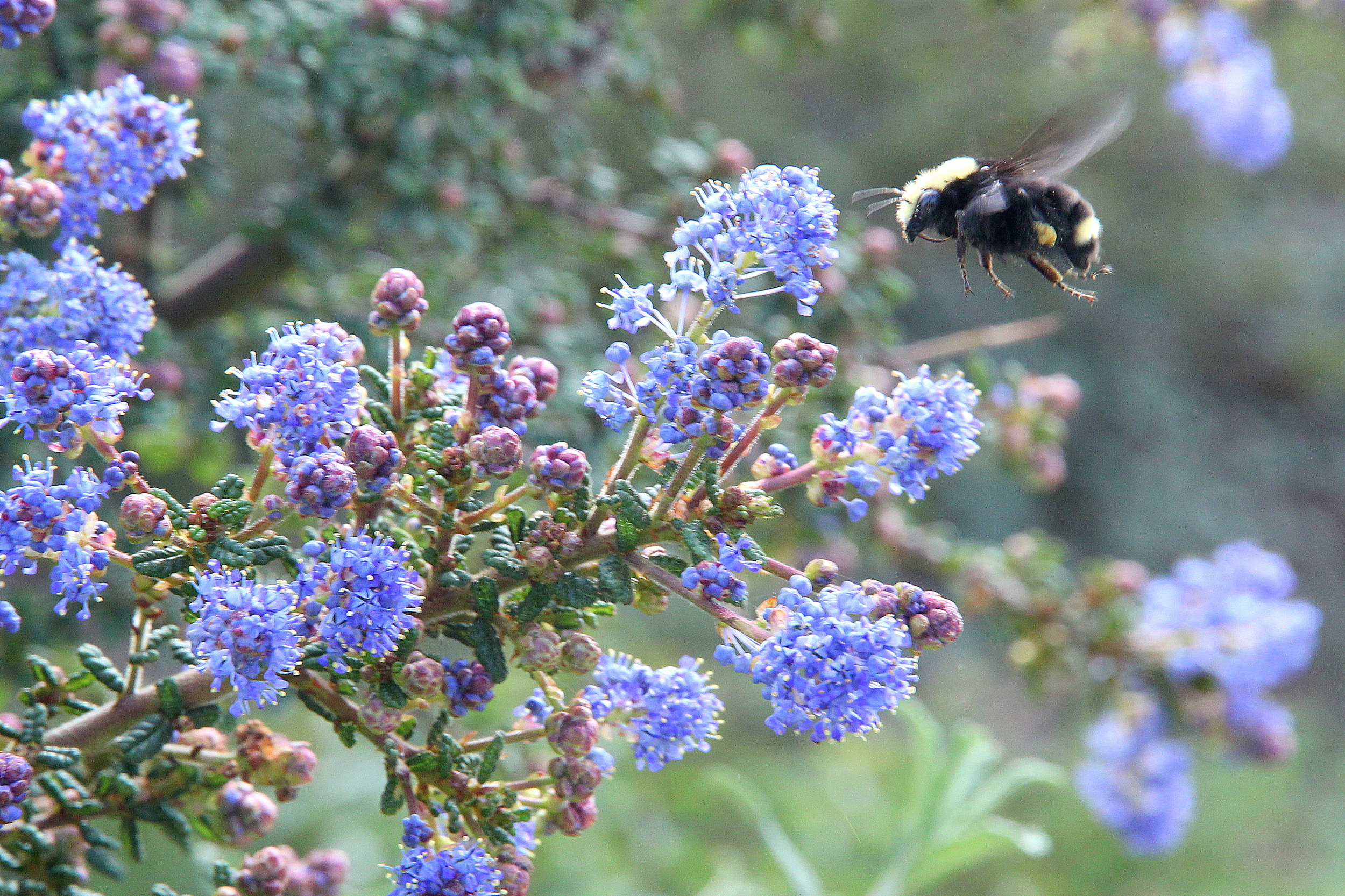Ceanothus impressus
Santa Barbara Ceanothus
This is a selection by Austin Griffiths from the Burton Mesa in northern Santa Barbara County. Its small black-green leaves are arranged densely on arching branches that create a tight, compact habit. The upper surfaces of the short, nearly round leaves are deeply textured. Mature plants are 5 feet high by 4 to 7 feet wide. Especially deep blue flowers bloom in clusters in mid-spring. Plant it in full sun along the coast in well-draining soil.
Wildlife value: Ceanothus are hosts to a number of butterflies, including the Pipevine Swallowtail, Brown Elfin, Hedgerow Hairstreak, and Echo Blue. Their abundant flowers draw many insects. Ceanothus leaf litter supports plenty of invertebrates which, in turn, feed birds and lizards. The foliage provides excellent cover. The larger-leaved species are good forage for deer. Quail eat the small, hard seeds, and a number of mammals both large and small browse the twigs and foliage.
Additional notes about Ceanothus: Many Ceanothus are prone to disease in summer-wet soils, so little watering is recommended after the plants are established. Tip-pruning will keep plants compact. Small, wrinkled, or spiny-leaved forms are usually unattractive to deer. Ceanothus roots fix nitrogen in the soil. These plants will suffer if their roots are handled. Do not pry or prune the roots.

